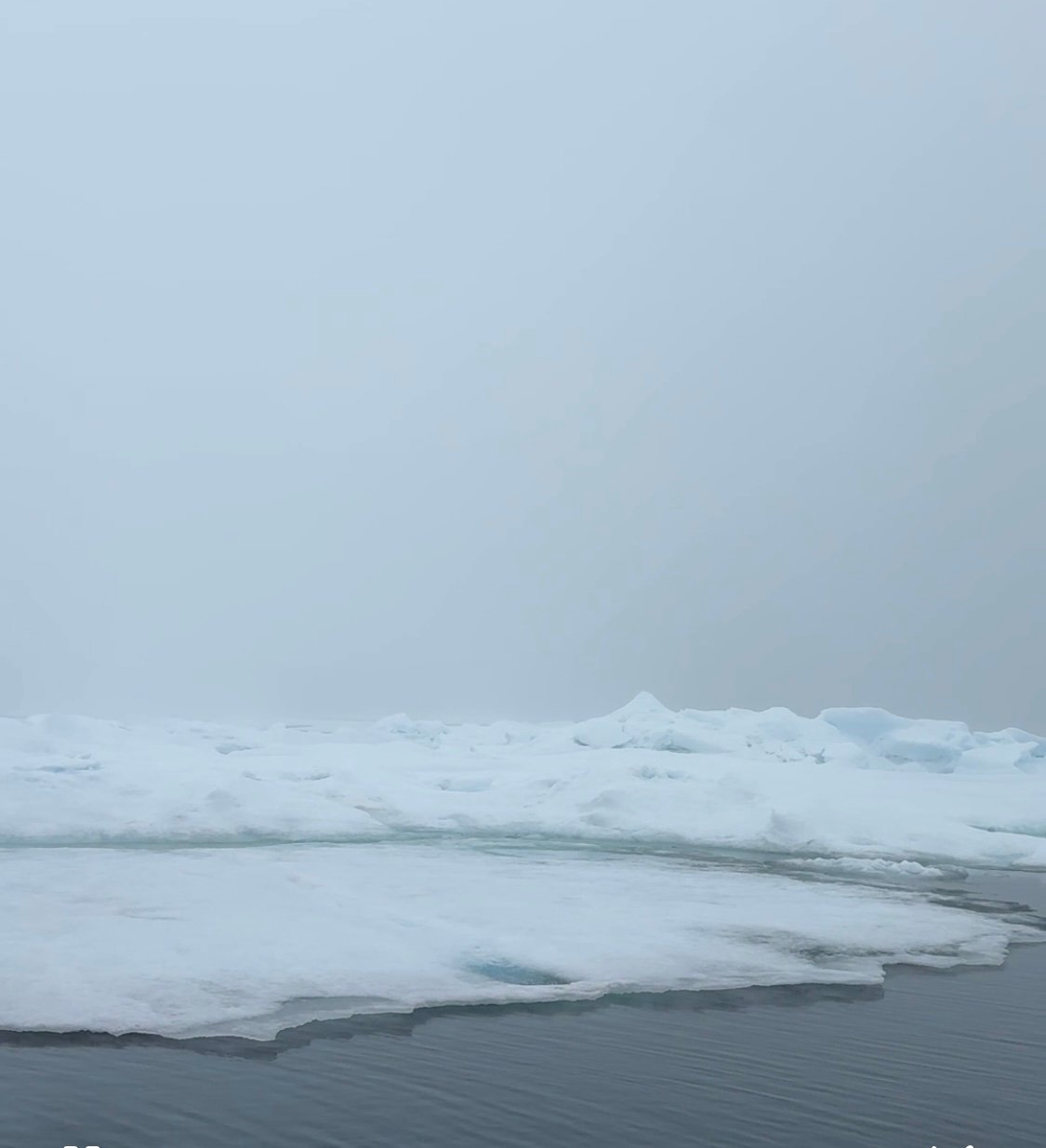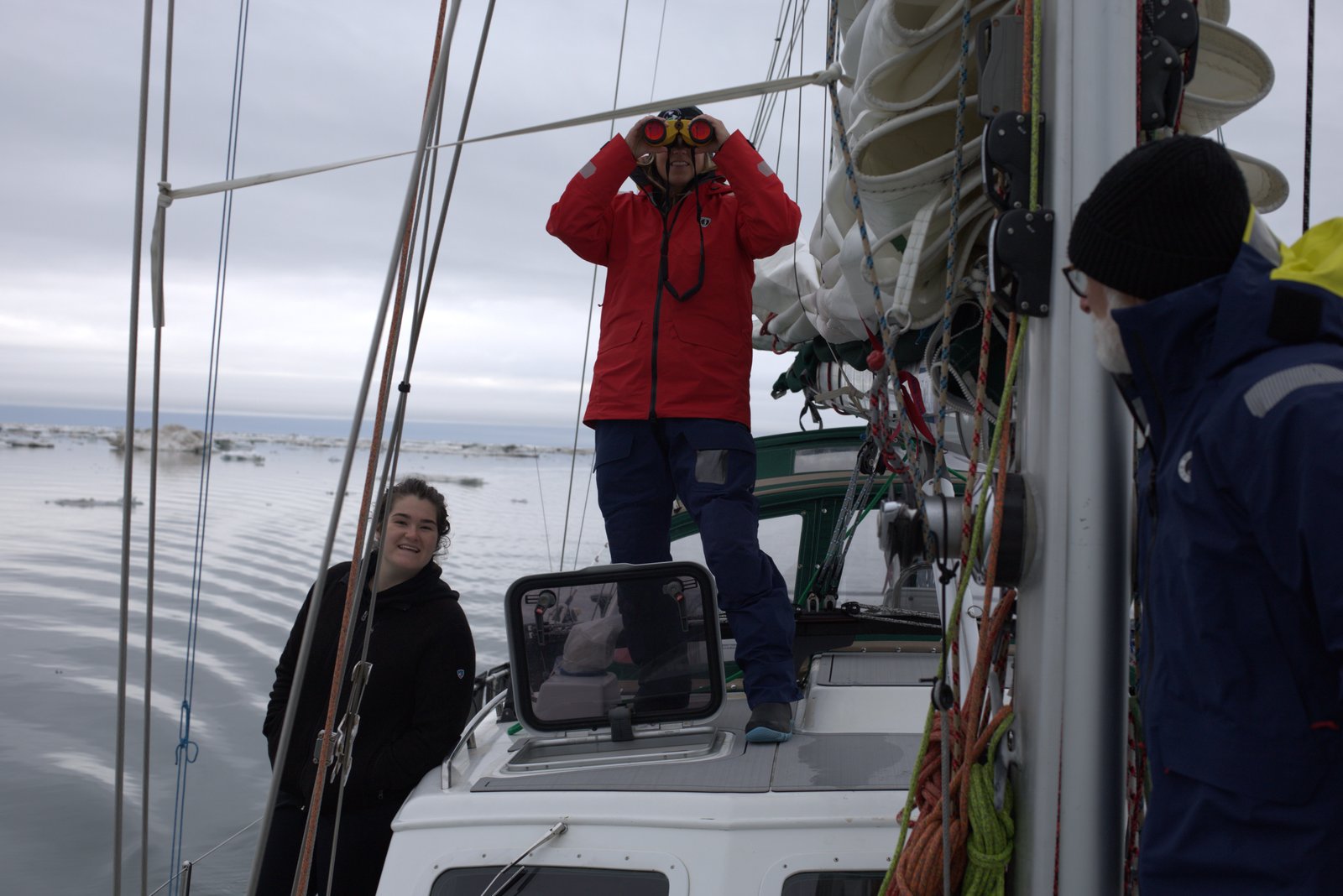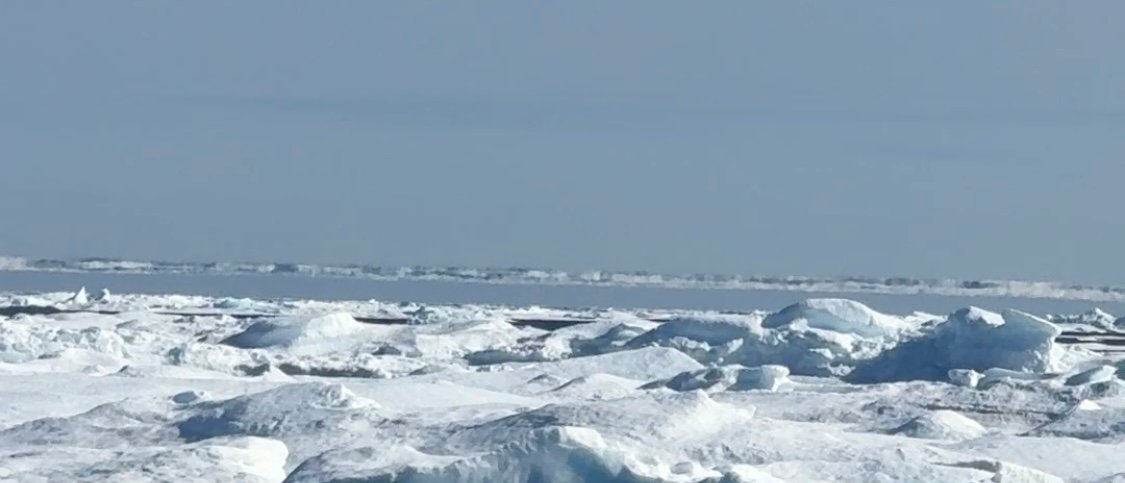It’s my turn at the helm. I’ve been on watch with Grace and Mark since 10 p.m., and it’s now 12:30 a.m.—an hour and a half left before a crew change. It’s 32 degrees outside, no wind, but lots of fog. We’re lucky to be able to steer from inside. Despite the intensity of the situation, the cabin is warm and cozy. Grace is crouched on the couch with binoculars, scanning the port side. Mark paces between her and me. We are all hyper-focused on what’s before us…ice, ice, baby.
The ice pack ranges from three to five tenths. So far, we’ve been able to thread the needle, but it’s tight. Suddenly, a loud scrape on the starboard side—the hull hit a submerged ice chunk. My shoulders clench toward my ears. A bitter, metallic taste floods my mouth. I swallow hard. Stay focused.

The three of us make constant decisions—moment by moment. Grace and I work in sync, calling out leads in the ice: “Leaping dolphin to port! Soaring eagle to starboard!”
“Four minutes left,” Grace announces. We’ve shortened shifts at the helm from 30 to 15 minutes to stay sharp. My hands grip the hydraulic wheel, not the easiest to steer. I take a deep breath. I can do four more minutes. Slow, steady. We’re deep in it now. I have to get us out—no other choice—but the ice looms taller, darker ahead.
Grace calls for me to maneuver to port. The ice blocks my view. My time is up and it’s Mark’s turn. He slides in and takes the wheel before I even let go—there’s no room for error. He’s already locked in. Grace shifts to the center position, and I jump on the couch with binoculars, wiping down the steamy windows.
Mark steers us port, then starboard. White ice walls streaked with orange-brown rise as tall as the windows. Suddenly, we’re in a narrow ice channel. At 4 knots, the floe traps us—we no longer have choices. We’re at the mercy of the ice.
The fog lifts, and through my binoculars I see a solid white wall ahead. I lower them and glance at Grace. Her worried look confirms she sees it too.
Mark waits for our calls, but we hesitate—there are no leads. The pause lingers. He asks again, then spots the wall himself. I tell him to hold the course. We stay quiet as Mark shifts One Ocean to neutral. She drifts toward the massive wall. We wait, hoping something will open.
When we’re about a football field away from the dead end, a starboard channel suddenly opens. Grace calls it, and Mark turns the wheel. The turn is so sharp I worry One Ocean won’t make it, but she does. Moments later, he swings her hard to port. The chart plotter shows us edging farther out to sea—toward thicker ice. The charts predict 5–9 tenths there. Our fiberglass hull can’t handle that—nor could steel—but for now, we have no other choice.
Mark’s fifteen minutes fly by and now Grace is at the helm. We call out leads, working our way to starboard. About forty-five minutes later, we see open water and finally set course toward land.
By the time the next shift of crew wakes, we’re exhausted. We collapse into our bunks, knowing in just four hours we’ll be back on watch.
Sure enough, four quick hours later I woke to the sharp urgency of directional calls—”port”, then “starboard!” We’re back in first-year pancake ice, one to three inches thick. Easier to see over, but endless. I hastily pull on my Mustang Meris gear and head for the cabin.
We’re a mile offshore from Prudhoe Bay, Alaska. Dave is at the helm while Tess and Mike call out leads. But again, there seem to be no options. Their watch is technically over, but for now we need all eyes on deck. Mark and I discuss sending me up the mast when Mike suggests flying the drone.
Dave finds a patch of open water, and we float while Mike and Grace set it up. I scramble onto the rooftop with binoculars. The fog has lifted, the sky is clear, and I can scan in all directions.
Mike and Grace, experienced drone flyers from our kelp studies, set the drone on the stern. It lifts, hovers—and clips the dinghy edge, flipping upside down into the icy sea. Luckily, the floats Mike added keep it on the surface, and they retrieve it quickly.
Meanwhile, Dave holds One Ocean clear of the ice. I stay on the cabin roof, scanning for leads. The cold bites at my cheeks, but the fresh air sharpens me, shaking off my fatigue. Suddenly, I spot open water. A lead opens through the pack. I shout through the window for Dave to steer to port.


That ice is now behind us, but we knew it wasn't over. We hadn’t yet reached the severe plug between the Beaufort Sea and Amundsen Gulf that had blocked ships from transiting the Northwest Passage all summer. Still, we took our moments of calm where we could: exploring harbors that offered respite and eating well. We emerged unscathed, in good spirits—and still talking to each other - for now, it’s smooth sailing.
Over and out for now -
Jenn
